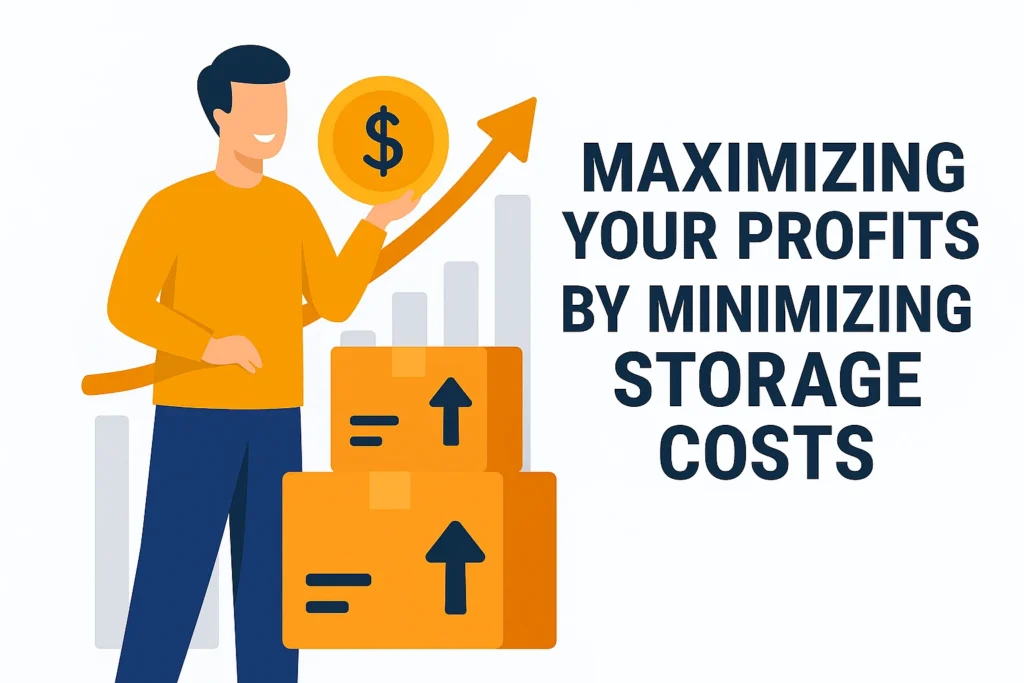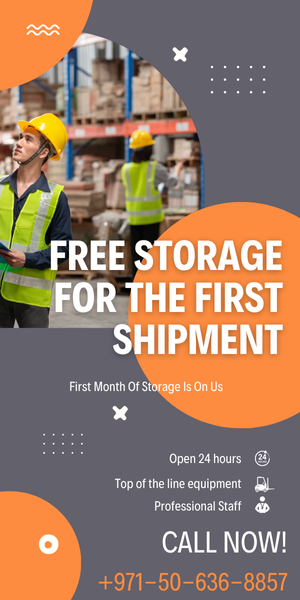Whether you’re running a small e-commerce shop or managing hundreds of daily orders, one thing remains true: warehousing and storage can quietly eat into your profits if not managed carefully. In Dubai and the broader UAE, where commercial space comes at a premium, keeping those costs under control can make a huge difference. Here’s a comprehensive guide to help you reduce storage expenses while keeping your operations smooth and efficient.
1. Keep Your Inventory Lean, Not Bloated
The more stock you hold, the more you pay in storage. Instead of stacking shelves with slow-moving products, use historical data to predict your best sellers and restock them in realistic cycles. It’s not just about having less inventory, it’s about having the right inventory.
Consider seasonal trends, regional demand, and promotional cycles when planning your stock. Cutting down excess inventory reduces rent, handling labor, and even the risk of damage or obsolescence.
2. Rethink Your Storage Setup
Maximizing the space you already pay for is one of the quickest ways to reduce costs. Use vertical racking systems, organize products by sales frequency, and review your warehouse layout for efficiency. High-demand products should always be easy to reach, and similar SKUs should be stored near each other to minimize picking time.
If you’re outsourcing your storage, look for providers who charge based on volume or pallet space used instead of flat monthly rates. This makes costs more flexible as your business scales up or down.
3. Automate Reordering and Stock Monitoring
Manual stock checks are time-consuming and prone to error. With basic inventory management software, you can automate reordering based on sales velocity, receive alerts when stock is low, and get clear insights into your daily stock movement.
Even entry-level systems can reduce human error, streamline fulfillment, and avoid costly overstocking or missed sales. Many platforms also integrate directly with marketplaces like Amazon, Noon, or Shopify.
4. Embrace Cross-Docking and Faster Turnaround
Cross-docking is a simple but powerful concept: goods arrive at your facility and go straight out to customers or retail stores without sitting in storage. If you’re moving fast-selling items or have regular inbound shipments from China or other suppliers, this can drastically reduce the space you need and speed up delivery times.
It’s especially effective when working with third-party logistics providers who can coordinate inbound and outbound shipments on your behalf.
5. Apply Inventory Strategies Like ABC and JIT
ABC inventory management helps you group products by their value and demand. Focus your resources on high-value, fast-moving SKUs (Group A), give moderate attention to mid-tier products (Group B), and limit storage for low-value or rarely sold goods (Group C).
Just-in-time (JIT) inventory methods go a step further. Instead of storing large volumes, you order and receive stock only when needed. While JIT requires strong supplier relationships and precise timing, it frees up significant storage space and reduces holding costs.
6. Outsource Smartly
In many cases, working with a fulfillment partner like SamVertex can help reduce your fixed costs and give you flexibility. You only pay for the space and services you use, and you benefit from their optimized storage systems, labor, and tracking technology.
Look for providers that offer value-added services like product labeling, returns handling, and real-time inventory dashboards. These extras save you time and money while improving customer satisfaction.
7. Minimize Waste and Hidden Expenses
Packaging waste, electricity, unused space, and outdated stock can silently eat into your profit margins. Monitor utility bills, reduce lighting and cooling costs where possible, and switch to eco-friendly practices. Reuse packing materials, avoid over-packaging, and sell off old inventory at a discount instead of letting it take up shelf space.
Quick Recap: Cost-Saving Storage Strategies
| Tip | What It Helps With |
|---|---|
| Keep Inventory Lean | Reduces holding costs and improves cash flow |
| Optimize Layout | Saves on space, rent, and picking time |
| Use Inventory Software | Avoids stockouts and overstocking |
| Cross-Docking | Minimizes storage and speeds delivery |
| ABC & JIT Planning | Maximizes efficiency with less space |
| Third-Party Fulfillment | Offers flexibility and cost control |
| Reduce Utility Waste | Cuts down on unnecessary monthly expenses |
Need Help Cutting Storage Costs?
At SamVertex, we specialize in helping UAE-based sellers lower their warehousing expenses while improving fulfillment speed. Whether you need flexible pallet space or full inventory planning, our team can build a solution that matches your business needs.
✅ Flexible Storage by the Pallet or Cubic Meter
✅ Smart Inventory Planning Tools
✅ Order Fulfillment Integrated with Amazon, Noon & Shopify
✅ Free Consultations for First-Time Clients
📞 Ready to find out how much you can save? Get in touch with us now
Sources
- cyzerg.com – Warehouse cost strategies and layout tips
- stardistribution.us – Efficient storage and fulfillment methods
- netsuite.com – Reducing warehouse costs and streamlining operations
- warehousingandfulfillment.com – Comparison of 3PL and in-house storage
- prologis.com – Smart inventory practices for commercial warehousing
- investopedia.com – Holding cost breakdown and how it affects profit
- wikipedia.org – Carrying cost definition and inventory theory
- cubework.com – Space optimization tips for UAE logistics
- fedex.com – Cross-docking explained
- shipbob.com – Third-party warehousing cost structures

